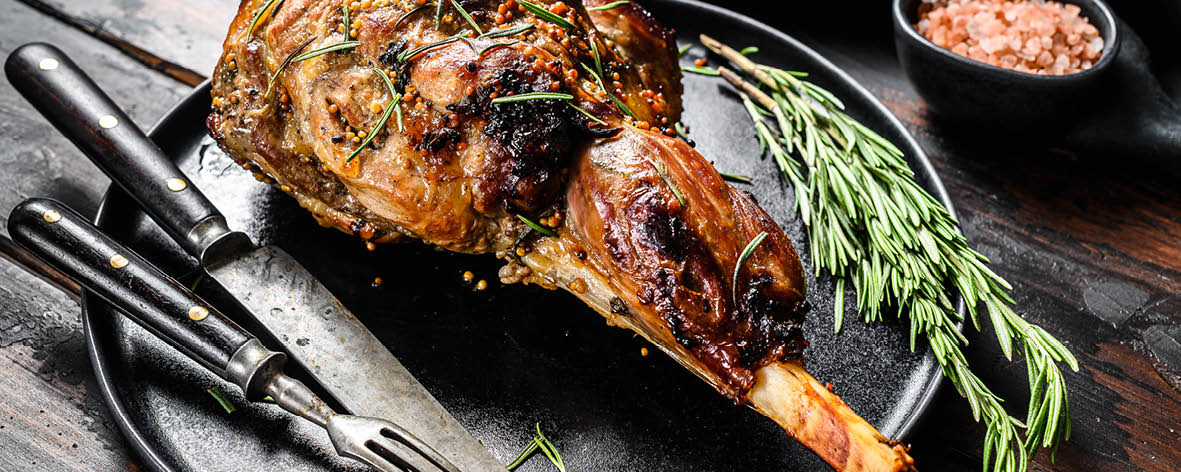Everything you need to know about … spring lamb

It’s officially spring! And spring is the time for spring lamb. But do you know your chops from your loin? Your leg from your shank? Read on to find out how best to cook Australia’s favourite meat.
Spring is the time for spring lamb - so called not because lambs are born in spring (most are born in winter) but because they are sent to the butcher in spring, at the age of 3-5 months.
A useful and hardy animal, the sheep was one of the first to be domesticated and was valued because it produced not only meat but milk and wool. Central to many religious festivals and celebrations, it’s eaten by Muslims for New Year celebrations, is important in the Jewish Passover meal and is traditionally eaten by Christians at Easter.
In ancient times lamb was probably eaten as an older animal and was herded long distances, so methods of tenderizing such as marinating and slow braising were developed.
Today, lamb is generally eaten as a young animal, ‘lamb’ classified as meat from an animal of less than one year, and ‘without permanent incisors in wear’. Once a sheep has two incisors it is termed a hogget, and animals older than two years are mutton.
Lamb is eaten the world over, from the barbeques of Mongolia to the curries of India, the stews of Britain to the tagines of Morocco. The different cuts of lamb lend themselves to different cooking methods. Here’s a rundown:
Leg - kept whole for a roast, boned or butterflied. A 2kg bone-in leg can be roasted for 1.5 hours for a medium pinkness. Or, try it slow roasted on a bed of sautéed onion, celery, carrot and garlic, with 1 cup of white wine and 1 cup veal or chicken stock, a bay leaf and a tablespoon of juniper berries, sealed in a casserole dish with a tight fitting lid and roasted at 120C for six to seven hours, until the meat is falling of the bone, and able to be ‘cut with a spoon’, or as the French say, gigot a la cuillère.
Shoulder - also good for slow roasting, either with the bone in or butterflied and rolled, or used for a stew or braise. It can be chopped into 3cm cubes for a Moroccan stew or chopped or minced for a traditional lamb pie.
Loin - can be cut into loin chops for grilling or barbecuing. A loin roast is a few chops kept together, boned, and rolled, and can be stuffed with a fragrant herb stuffing.
Chump end - for chump chops, these are meaty with great flavour and texture.
Chops and rack of lamb - the kids’ favourite, little tender cutlets with a handle. Nice in the pan or on the barbeque – marinate them first, Greek-style in red wine, oregano, olive oil and garlic.
Cutlets kept together are called a rack of lamb – perfect to roast in the oven for about 20 minutes at 200C for medium rare. Rub with garlic and rosemary, a splash of red wine and olive oil and a grind of sea salt. Add halved baby chat potatoes around the rack and you have a roast meal in under 30 minutes.
Lamb neck is an often-overlooked cut, great for hearty slow-cooked soups. Throw in a cup of pearl barley 30 minutes before the end.
And lastly the shanks – one of the most popular cuts these days for soups and falling-off-the-bone slow cooked braises.
Lamb goes with mint, rosemary, thyme, oregano, cumin, quince, garlic, lemons, preserved lemons, beans, chickpeas, lentils, olives, eggplant, and potatoes.

